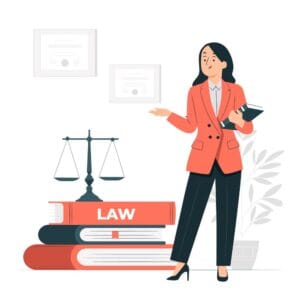Complex texts refer to materials that are dense, challenging, or technical in nature, such as research papers, legal documents, or technical manuals. These texts can be difficult to understand due to their complex language, structure, or concepts.
Summarizing complex texts is crucial because it helps us to comprehend the essential ideas and information presented in a shorter, more accessible form. It also saves time and allows us to efficiently review and remember critical information.

There are various techniques and approaches to summarize complex texts, including skimming and scanning, highlighting and annotating, the 5Ws and H approach, and the summary writing approach. We will discuss each in detail in the following sections.
Techniques for Summarizing Complex Texts
Skimming and scanning are techniques used to quickly read through a text to identify its main points. Skimming involves rapidly glancing over the text to get an idea of its content, while scanning involves searching for specific information or keywords.
Skimming and scanning are useful when you need to quickly determine if a text is relevant to your research or when you need to locate specific information quickly.
Start by previewing the text’s layout and structure in order to skim and scan complex texts efficiently. Read the first and last paragraphs of each section, as well as the headings and subheadings. Focus on any text that has been highlighted in bold or italics, as well as any diagrams or charts, and make a note of any words or phrases that stand out.
Highlighting and Annotating
Highlighting and annotating involve marking key points and ideas in a text. Highlighting involves using a marker or pen to emphasize critical sentences or paragraphs, while annotating involves adding notes, questions, or comments to the text.
When to use highlighting and annotating Highlighting and annotating are useful when you need to study a text in-depth or when you need to organize and retain important information.
To effectively highlight and annotate complex texts, read through the text thoroughly and mark key points and ideas. After this, write comments or questions in the margins to help you remember critical information.
The 5Ws and H Approach
The 5Ws and H approach involves answering the five W questions: Who, What, Where, When, and Why, and the H question: How. This approach helps to identify the key elements of a text.
To effectively use the 5Ws and H approach, read through the text and answer each of the questions:
- Who is involved?
- What is the main idea?
- Where is the information located?
- When did the event occur?
- Why is it important?
- How was it accomplished?
Automated text summarization approaches
Extractive text summarization techniques work by picking out the key phrases or passages from the source text and including them in the summary verbatim. The summarization process uses only the text that already exists; no new text is produced.
Abstractive text summarization techniques use more potent NLP techniques to decipher text and produce fresh summary text. Instead of performing the summarization by picking the most representative existing excerpts,.
It shouldn’t be difficult to persuade you that abstractive techniques are much more challenging to put into practise, even though both are legitimate approaches to text summarization. In actuality, extraction-based summarization techniques predominate today. This does not imply that abstractive approaches should be undervalued or disregarded.
The Summary Writing Approach
Summary writing involves condensing the key points and ideas of a text into a shorter, more concise version.
Read the text to extract the key points and details that support them before writing a summary. Then, summarize the data into a few sentences or paragraphs, making sure to include all of the text’s key points. It’s crucial to express yourself clearly while preserving the original author’s intended meaning.
Tips for Effective Summarizing
- Before summarizing a complex text, it is essential to understand the text’s purpose and intended audience. This will help you to identify the most critical information and convey it effectively.
- Identifying the main ideas of a text is crucial to summarize it effectively. Look for topic sentences, thesis statements, and supporting evidence to determine the main points.
- When summarizing a complex text, it is essential to ignore irrelevant or extraneous information that does not contribute to the main ideas of the text.
- On the other hand, a summary generator is a useful solution for effective summarizing. It summarize complex text very easily and effectively.
- To avoid plagiarism and effectively summarize a text, it is important to use your own words while maintaining the original author’s intended meaning.
- A good summary should be clear and concise, focusing on the most critical information while avoiding unnecessary details.
Conclusion
The techniques and approaches to summarize complex texts include skimming and scanning, highlighting and annotating, the 5Ws and H approach, and the summary writing approach.
Understand the purpose of the text, pick out the key points, omit any unnecessary details, use your own words, and concentrate on being concise and clear. Any complex text can be effectively summarised using these methods and techniques.











